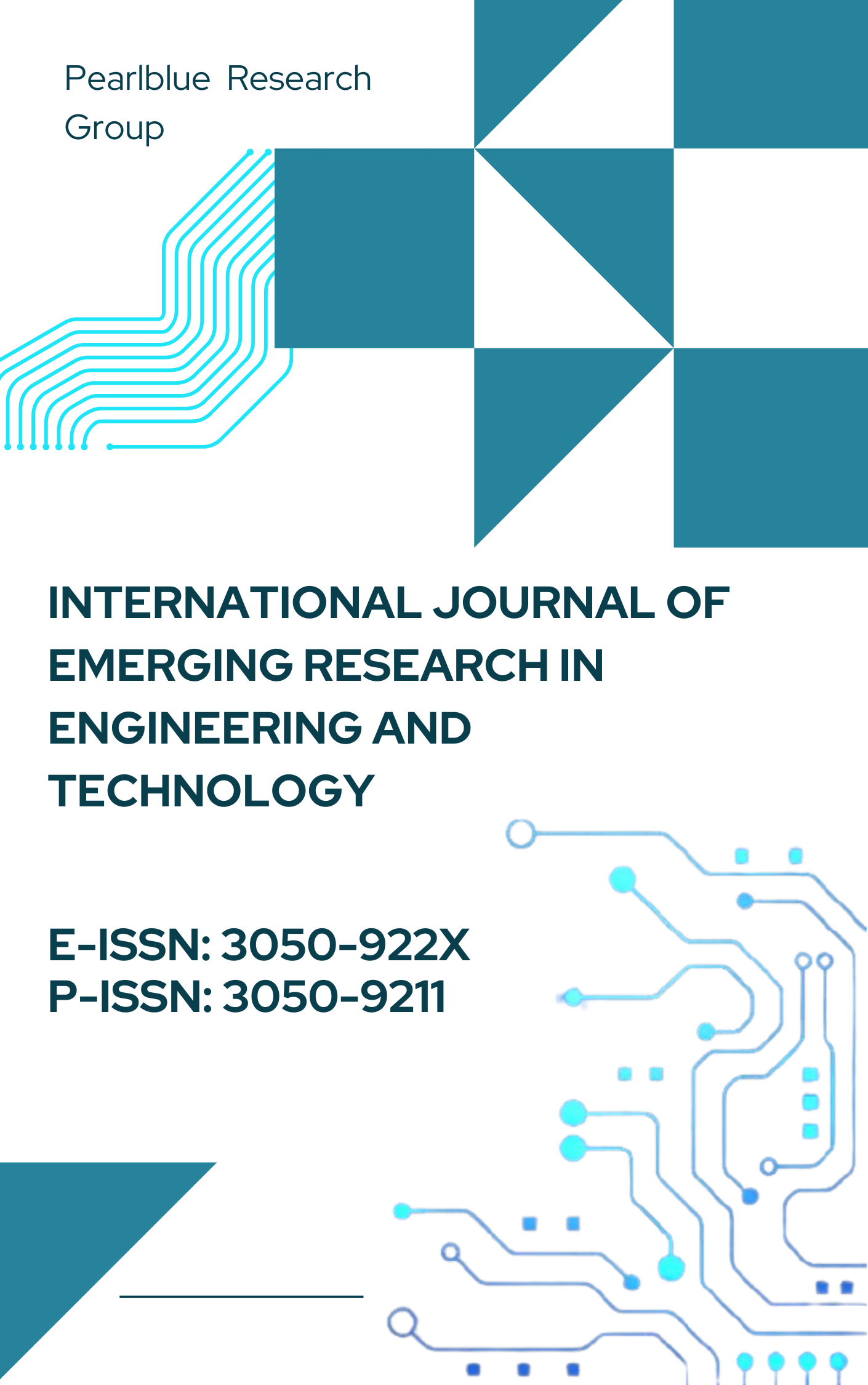Advanced API Security Techniques and Service Management
DOI:
https://doi.org/10.63282/3050-922X.IJERET-V3I4P108Keywords:
API Security, OAuth 2.0, JWT, API Gateway, Zero Trust, TLS, mTLS, Anomaly Detection, Service MeshAbstract
Application Programming Interfaces (APIs) provide the enabling layer behind smooth communication among different systems, platforms, and devices in the digital age. As much as APIs spur the speed of innovation, they subject the organization to an ever-increasing list of security threats. The following paper will discuss some of the most sophisticated methods of API security and the current efficient approaches to managing services to give an overall outlook on how a modern system can be secured against the emerging threats. The paper starts with a description of modern API architectures and types of threat vectors used to breach these architectures, such as injection attacks, broken authentication, and excessive data exposure. It explores the OWASP API Security Top 10 to highlight the worst vulnerabilities. More advanced security controls (ink token-based authentication (OAuth 2.0, OpenID Connect, and JWT)), API gateways, rate limiting, mutual TLS, and Zero Trust principles are covered. The role of AI/ML in anomaly detection and the necessity of real-time monitoring and testing with the help of fuzzing tools are also discussed in the paper. The paper also identifies security in addition to API lifecycle governance, policy enforcement, and service mesh integration (e.g. Istio and Envoy), amidst other practices as critical service management practices. Current real-life case studies, such as API-based supply chain and telecommunication API breaches, will be examined to underline the practical significance of effective security systems. Lastly, the future, including AI-enabled cybersecurity, quantum unfriendliness, and API security with IoT and 5G, is explored
References
[1] Munsch, A., & Munsch, P. (2020). The Future of API Security: The Adoption of APIs for Digital Communications and the Implications for Cyber Security Vulnerabilities. Journal of International Technology & Information Management, 29(3).
[2] Biehl, M. (2015). API architecture (Vol. 2). API-University Press.
[3] Gough, J., Bryant, D., & Auburn, M. (2021). Mastering API architecture: design, operate, and evolve API-based systems. " O'Reilly Media, Inc.".
[4] Suzic, B. (2016, April). User-centered security management of API-based data integration workflows. In NOMS 2016-2016 IEEE/IFIP Network Operations and Management Symposium (pp. 1233-1238). IEEE.
[5] Andreo, S., & Bosch, J. (2019, October). API management challenges in ecosystems. In International Conference on Software Business (pp. 86-93). Cham: Springer International Publishing.
[6] Siriwardena, P. (2014). Advanced API Security: Securing APIs with OAuth 2.0, OpenID Connect, JWS, and JWE. Apress.
[7] Kubovy, J., Huber, C., Jäger, M., & Küng, J. (2016, October). A secure token-based communication for authentication and authorization servers. In International Conference on Future Data and Security Engineering (pp. 237-250). Cham: Springer International Publishing.
[8] Jánoky, L. V., Levendovszky, J., & Ekler, P. (2018). An analysis of the revoking mechanisms for JSON Web Tokens. International Journal of Distributed Sensor Networks, 14(9), 1550147718801535.
[9] Madden, N. (2020). API security in action. Simon & Schuster.
[10] Xu, R., Jin, W., & Kim, D. (2019). Microservice security agent based on the API gateway in edge computing. Sensors, 19(22), 4905.
[11] Akpakwu, G. A., Silva, B. J., Hancke, G. P., & Abu-Mahfouz, A. M. (2017). A survey on 5G networks for the Internet of Things: Communication technologies and challenges. IEEE Access, 6, 3619-3647.
[12] Husák, M., Čermák, M., Jirsík, T., & Čeleda, P. (2016). HTTPS traffic analysis and client identification using passive SSL/TLS fingerprinting. EURASIP Journal on Information Security, 2016(1), 6.
[13] Cloud-native success requires API security, SDTimes, online. https://sdtimes.com/api/cloud-native-success-requires-api-security/
[14] Siriwardena, P. (2014). Advanced API Security. Apress: New York, NY, USA.
[15] Bhargavan, K., Fournet, C., Kohlweiss, M., Pironti, A., & Strub, P. Y. (2013, May). Implementing TLS with verified cryptographic security. In 2013 IEEE Symposium on Security and Privacy (pp. 445-459). IEEE.
[16] Stafford, V. (2020). Zero trust architecture. NIST special publication, 800(207), 800-207.
[17] Bui, D. H. (2018). Design and Evaluation of a Collaborative Approach for API Lifecycle Management. Technical university of munich.
[18] Mathijssen, M., Overeem, M., & Jansen, S. (2020). Identification of practices and capabilities in API management: a systematic literature review. arXiv preprint arXiv:2006.10481.
[19] El Malki, A., & Zdun, U. (2019, September). Guiding architectural decision making on service mesh-based microservice architectures. In European Conference on Software Architecture (pp. 3-19). Cham: Springer International Publishing.
[20] Ometov, A., Bezzateev, S., Mäkitalo, N., Andreev, S., Mikkonen, T., & Koucheryavy, Y. (2018). Multi-factor authentication: A survey. Cryptography, 2(1), 1.
[21] Pappula, K. K., & Anasuri, S. (2020). A Domain-Specific Language for Automating Feature-Based Part Creation in Parametric CAD. International Journal of Emerging Research in Engineering and Technology, 1(3), 35-44. https://doi.org/10.63282/3050-922X.IJERET-V1I3P105
[22] Rahul, N. (2020). Vehicle and Property Loss Assessment with AI: Automating Damage Estimations in Claims. International Journal of Emerging Research in Engineering and Technology, 1(4), 38-46. https://doi.org/10.63282/3050-922X.IJERET-V1I4P105
[23] Enjam, G. R., & Chandragowda, S. C. (2020). Role-Based Access and Encryption in Multi-Tenant Insurance Architectures. International Journal of Emerging Trends in Computer Science and Information Technology, 1(4), 58-66. https://doi.org/10.63282/3050-9246.IJETCSIT-V1I4P107
[24] Pappula, K. K., & Anasuri, S. (2021). API Composition at Scale: GraphQL Federation vs. REST Aggregation. International Journal of Emerging Trends in Computer Science and Information Technology, 2(2), 54-64. https://doi.org/10.63282/3050-9246.IJETCSIT-V2I2P107
[25] Pedda Muntala, P. S. R., & Jangam, S. K. (2021). End-to-End Hyperautomation with Oracle ERP and Oracle Integration Cloud. International Journal of Emerging Research in Engineering and Technology, 2(4), 59-67. https://doi.org/10.63282/3050-922X.IJERET-V2I4P107
[26] Rahul, N. (2021). AI-Enhanced API Integrations: Advancing Guidewire Ecosystems with Real-Time Data. International Journal of Emerging Research in Engineering and Technology, 2(1), 57-66. https://doi.org/10.63282/3050-922X.IJERET-V2I1P107
[27] Enjam, G. R., & Chandragowda, S. C. (2021). RESTful API Design for Modular Insurance Platforms. International Journal of Emerging Research in Engineering and Technology, 2(3), 71-78. https://doi.org/10.63282/3050-922X.IJERET-V2I3P108



